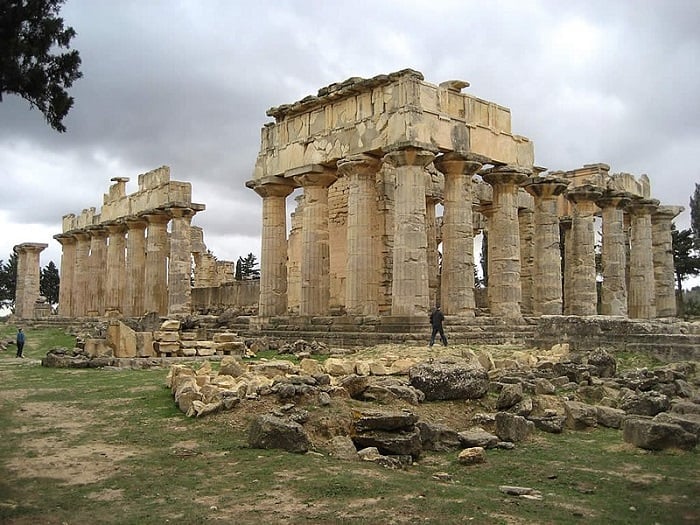
Floods that killed thousands in Libya also inundated parts of Cyrene, the ancient Greek city and the region’s sole UNESCO-listed site threatening the monuments with collapse, archaeologists warn.
The immediate damage to the monuments of Cyrene, which include the second-century AD Temple of Zeus, bigger than the Parthenon in Athens, is relatively minor but the water circulating around their foundations threatens future collapses, the head of the French archaeological mission in Libya, Vincent Michel, told AFP.
“Since the stone in the region is of poor quality, the monuments risk falling apart due to lack of good foundations,” he added.
The adjacent necropolis has been inundated by “hundreds of cubic meters of water which has shifted and submerged some of the tombs,” he added speaking to AFP.
The ancient Greco-Roman city of Cyrene (Shahhat) is located about 60 km (37 miles) west of flood-hit Derna.
ALERT- Floods that hit eastern Libya last week have damaged the @UNESCO world heritage site of Cyrene (locally known as Shahhat). Cyrene is a stunning ancient Greek later Roman city overlooking the coast, 60km west of Derna. I visited the site and this is what I found. THREAD pic.twitter.com/BbOCXC9pli
— Claudia Gazzini (@ClaudiaGazzini) September 18, 2023
Floods threaten the Ancient Greek city Cyrene in Libya
According to Claudia Gazzini, Libya specialist at the International Crisis Group think tank, who recently visited the site, much of it remains waterlogged days after the torrential rains triggered by Storm Daniel on September 10 to 11.
In places, ancient walls have collapsed, blocking the water courses that would normally drain the sprawling site, which also boasts a necropolis outside its walls as large as the city itself.
“There’s a street lined by ancient walls that connects the upper and lower levels down which rainwater would normally escape but large boulders have fallen in, blocking the flow,”, Gazzini told AFP.
“On the lower level, there’s also dirty water continuously bubbling out of the ground in the middle of the ruins,” she said, adding that neither residents of the adjacent village of Shahat nor an official from local antiquities division that she met there, could tell her where it was coming from.
“If water continues to flow in and remains trapped in the site, the retaining wall could collapse, taking with it a large chunk of the ruins,” she said.
The Ancient Greek city of Cyrene in Libya
Cyrene, the ancient Greek and later Roman city was the oldest and most important of all five Greek cities in the region.
It gave eastern Libya the classical name of Cyrenaica that it has retained into modern times. Located nearby is the ancient Necropolis of Cyrene.
More than two thousand years ago, a group of Greeks from the island of Thira (also known as Santorini) headed south, searching for a new place to live. Their journey ended in the northern part of Africa in modern-day Libya.
These Greek settlers established a new city, calling it Cyrene. The city, which was founded in 631 BC, soon had its first King, Battus, ruling over it.
Battus was the first powerful figure in what later became the famous dynasty of Battiads.
Cyrene was prosperous and had trade ties with every Greek city in what is now the modern Greek mainland and islands.
It was one of the principal cities in the ancient Greek world with its temples, tombs, agora, gymnasium, and Cyrene Amphitheatre all thought to be inspired by the historic structures of Delphi.